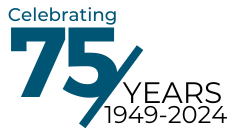Harvard, Yale, Princeton… do you hope to send your children to one of these schools? If so, you might want to start your fund sooner rather than later. According to Time Magazine, college graduates face an average of $35,000 in debt. Without the proper preparation, this amount could be higher for your children. Saving early is the key to success when it comes to fighting student loan debt. Here are a few options for saving plans for the future Crimsons, Bulldogs, or Tigers in your family.
The 529 Plan
This plan is essentially a tax break that could be worth thousands of dollars. The plan does vary based on where you live, but basically breaks down into two options.
Prepaid Plan: One year of tuition is paid in advanced. This price is locked in and is not flexible.
Savings Investment Plan: This plan allows for more flexibility and is best for those who are starting savings plans for younger children. It can cover a variety of costs, regardless of educational institution.
Educational institutions can offer prepaid plans, but cannot offer savings investment programs. Should you go for the savings investment plan, be aware that there is a 10 percent penalty plus income tax rates if you decide to use money from either plan for non-educational purposes.
Education Savings Account (ESA)
If you have students in private elementary, middle, or high schools, this might be a viable plan for you. ESA’s are only open to couples with a gross income less than $220,000 and have a maximum contribution of $2,000 per year until your child’s 18th birthday.
Roth IRA
While these are usually thought of as retirement accounts, Roth IRA’s can be tapped into for educational expenses after five years. One downside is that there is a maximum contribution of $5,500 per year for those under age 50, and $6,500 for those over age 50.
UGMA and UTMA Custodial Accounts
Financial gifts can be contributed into this account until he or she turns 18. They do offer tax benefits, but the money becomes your child’s once he or she turns 18 with no limit on how it is spent. This can affect how much financial aid you qualify for when filling out your FAFSA form.
Sponsored by:


